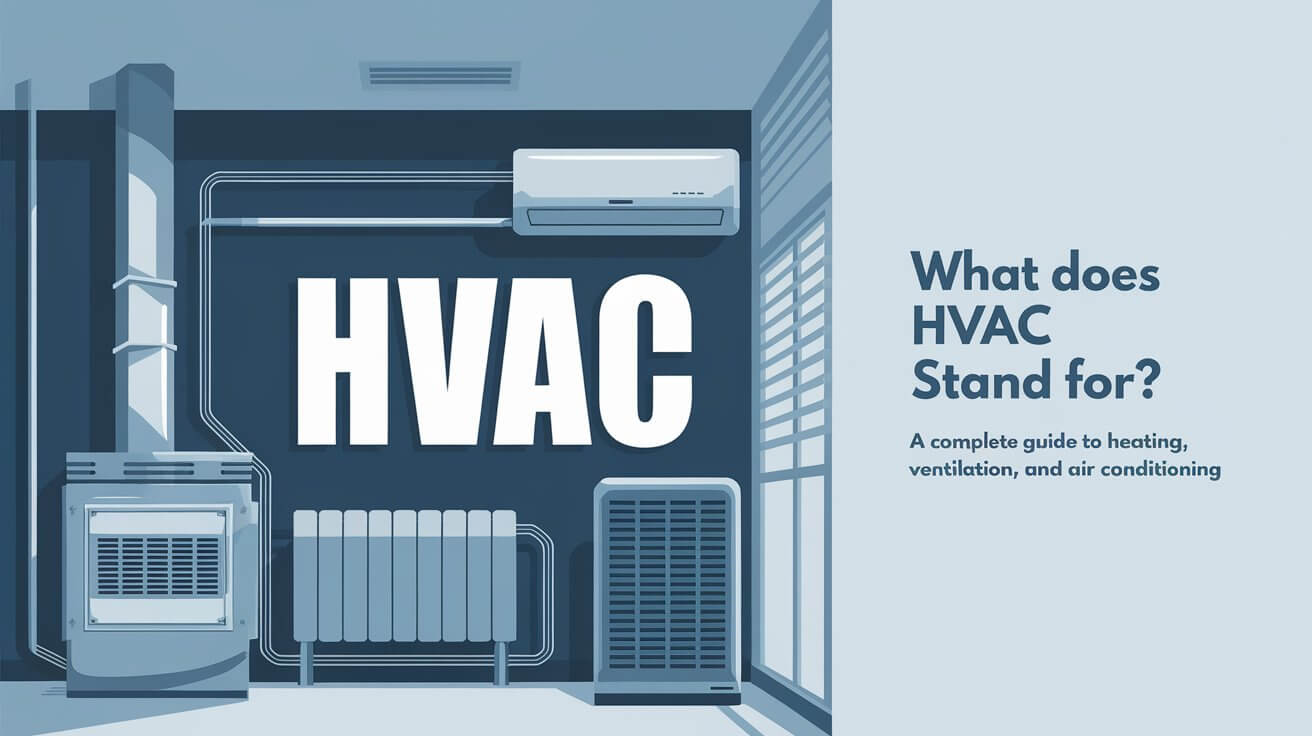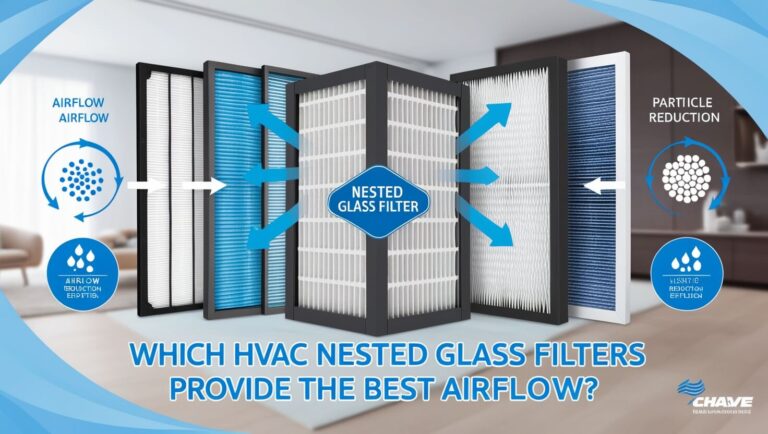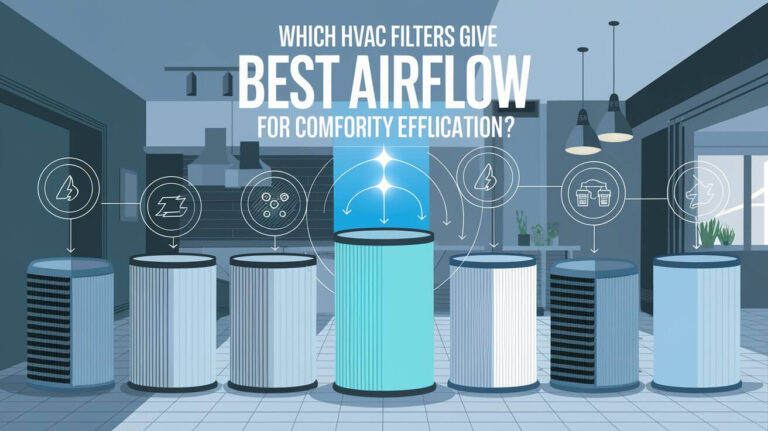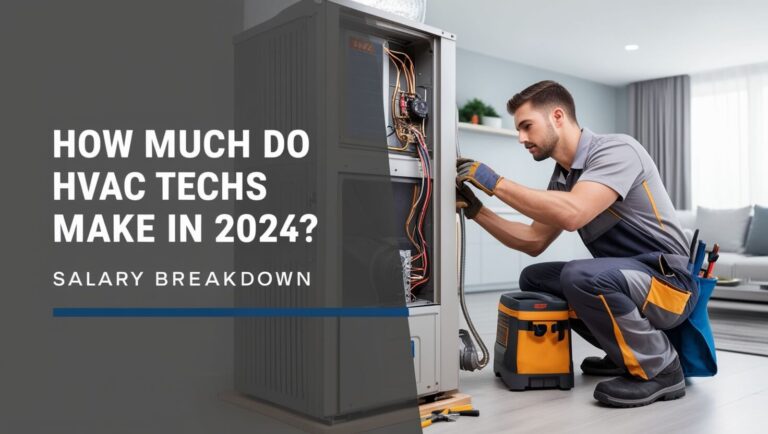What Does HVAC Stand For? A Complete Guide to Heating, Ventilation, and Air Conditioning

Heating, Ventilation, and Air Conditioning—commonly abbreviated as HVAC—represents the technology used to regulate indoor climates and air quality in residential, commercial, and industrial spaces. This system is essential for maintaining comfortable temperatures, improving indoor air quality, and ensuring proper airflow within a building. Whether you’re experiencing a chilly winter or a sweltering summer, your HVAC system is working behind the scenes to keep your environment balanced and healthy.
The Components of HVAC Systems
HVAC systems are a combination of different technologies working together to achieve heating, ventilation, and cooling. Here’s a deeper dive into each component:
Heating
Heating is essential in colder months when indoor temperatures need to be increased to maintain comfort. Heating systems can vary, but the most common types include:
- Furnaces: These systems burn fuel (natural gas, propane, oil, or electricity) to generate heat. Forced-air furnaces distribute this heat through a network of ducts and vents.
- Boilers: Unlike furnaces, boilers heat water or steam to warm your home. This heated water is distributed via radiators or radiant floor systems.
- Heat Pumps: A more energy-efficient option, heat pumps transfer heat from outside to inside during colder months and reverse the process during warmer months.
Ventilation
Ventilation is crucial for removing stale air, controlling moisture levels, and providing fresh air to indoor spaces. Effective ventilation helps improve air quality by filtering out dust, allergens, and other contaminants. Some key features include:
- Ductwork: These systems distribute conditioned air throughout the building.
- Exhaust Systems: Ventilation removes polluted air and excess moisture, especially in kitchens and bathrooms.
- Energy Recovery Ventilators (ERVs): These systems recover heat or coolness from the outgoing air, making your system more efficient.
Air Conditioning
Air conditioning cools the air in warmer months, removing excess heat from your indoor environment. AC units work by drawing in warm air, cooling it through a refrigerant process, and distributing the cooled air. Common systems include:
- Central Air Conditioning: This system cools air centrally and distributes it through ducts.
- Ductless Mini-Splits: These systems offer individual room cooling without the need for ducts.
- Window Units and Portable ACs: More affordable, smaller-scale options for cooling specific spaces.
HVAC Systems and Their Types
HVAC systems come in different configurations, depending on the needs of the building. These types typically fall under two main categories: ducted and ductless systems.
Ducted Systems
Ducted systems use a series of air ducts to distribute air throughout the building. These systems are common in large residential homes and commercial spaces. The primary components of ducted systems include:
- Central Air Systems: This setup includes a furnace or air handler paired with an outdoor air conditioner or heat pump.
- Packaged Systems: Ideal for buildings without space for an indoor air handler, these systems combine heating and cooling components into one outdoor unit.
Ductless Systems
Ductless systems don’t require ductwork, making them ideal for homes or buildings without an existing duct infrastructure. Popular ductless options include:
- Ductless Mini-Splits: These systems are mounted on walls or ceilings, providing room-by-room control.
- Geothermal Systems: These systems use the Earth’s constant underground temperature to regulate indoor temperatures.
Commercial vs. Residential Systems
HVAC systems in commercial spaces often differ from residential systems due to size and usage requirements. Commercial systems may include:
- Rooftop Units (RTUs): Large, self-contained HVAC units installed on the roof.
- Variable Refrigerant Flow (VRF) Systems: Efficient systems that provide both heating and cooling simultaneously to different zones in a building.
How Does an HVAC System Work?
An HVAC system works by controlling the indoor climate through heating, cooling, and ventilating. Here’s a basic breakdown of how each component operates:
- Heating: The system burns fuel (e.g., natural gas or electricity) or uses heat pumps to generate warm air, which is then distributed via ducts or radiators.
- Cooling: Air conditioners use a refrigerant to absorb heat from indoor air, and then the heat is expelled outside via a condenser. The cooled air is circulated through your home.
- Ventilation: Ventilation systems exchange indoor air with fresh outdoor air. They can also filter and remove pollutants like dust, smoke, and allergens.
The Role of the Thermostat
The thermostat is the control center for your HVAC system. It monitors the indoor temperature and activates heating or cooling systems to maintain your desired temperature. Smart thermostats offer greater energy efficiency by learning your habits and adjusting the temperature automatically.
Benefits of HVAC Systems
A well-functioning HVAC system provides more than just comfort; it also offers numerous health and financial benefits:
Comfort and Temperature Control
HVAC systems keep your home or office at a comfortable temperature year-round, regardless of outdoor weather conditions. Whether it’s freezing or hot outside, your HVAC system ensures a consistent indoor climate.
Air Quality Improvement
Many HVAC systems include air filters that trap airborne particles such as dust, pollen, and bacteria. This helps improve the air quality, which is especially important for individuals with allergies or respiratory conditions.
Energy Efficiency and Cost Savings
Modern HVAC systems are designed with energy efficiency in mind. By maintaining a well-balanced indoor climate, these systems reduce energy consumption, leading to lower utility bills. Energy-efficient features like programmable thermostats and high-efficiency equipment ratings (e.g., SEER, HSPF, and AFUE) help to minimize energy usage.
Health Benefits
By controlling humidity and ventilation, HVAC systems can help prevent mold growth, reduce airborne allergens, and improve overall indoor air quality. This is particularly beneficial for those with asthma or other respiratory problems.
Maintenance of HVAC Systems
Regular maintenance is essential to keep your HVAC system running efficiently and to prolong its lifespan. Here’s what you need to know about HVAC upkeep:
Common Maintenance Tasks
- Filter Changes: Filters should be cleaned or replaced every 1-3 months, depending on usage and the type of filter.
- Duct Cleaning: Ducts should be cleaned every few years to prevent dust buildup.
- Inspections: Have a professional inspect the system twice a year—before summer and winter.
- Coil Cleaning: Both the evaporator and condenser coils should be kept clean to ensure efficient heat exchange.
DIY vs. Professional Maintenance
Some basic HVAC maintenance tasks can be done by homeowners, such as replacing filters and cleaning vents. However, more complex tasks, like inspecting electrical components or refrigerant levels, should be left to professionals. Regular professional maintenance can prevent costly breakdowns and keep your system running smoothly.
Common HVAC Problems and Troubleshooting
While HVAC systems are generally reliable, problems can arise. Here are some common issues and how to troubleshoot them:
- Thermostat Issues: If your system isn’t heating or cooling as expected, check the thermostat settings. Sometimes recalibrating or replacing the thermostat can solve the problem.
- Poor Airflow: If you’re not getting enough airflow, check the filters and vents. Clogged filters can restrict airflow, making your system work harder.
- Refrigerant Leaks: Low refrigerant levels can reduce cooling efficiency. Leaks should be handled by a professional, as refrigerants can be hazardous.
- Unusual Noises: Clanging, banging, or squealing noises could indicate a mechanical issue, such as loose components or motor problems.
When to Call a Professional
If you experience any of the following, it’s time to call an HVAC technician:
- The system cycles on and off frequently.
- Your utility bills are unexpectedly high.
- There are strange odors coming from the vents.
- The system is making loud or unusual noises.
Energy Efficiency in HVAC Systems
Energy efficiency is a significant factor in HVAC systems today, with modern technology offering better ways to manage energy consumption.
Understanding Efficiency Ratings
- SEER (Seasonal Energy Efficiency Ratio): Used to measure the cooling efficiency of air conditioners. Higher SEER ratings indicate better energy performance.
- HSPF (Heating Seasonal Performance Factor): Measures the efficiency of heat pumps. A higher HSPF rating means more efficient heating.
- AFUE (Annual Fuel Utilization Efficiency): Used to measure the efficiency of furnaces. A furnace with an AFUE of 90% means that 90% of the energy in the fuel becomes heat, while 10% is lost.
Reducing Energy Usage
To reduce energy consumption and lower utility bills, homeowners can:
- Install a Programmable Thermostat: A programmable thermostat automatically adjusts the temperature based on your schedule.
- Seal Ducts and Insulate: Proper insulation helps maintain indoor temperatures and reduces the strain on HVAC systems.
- Upgrade to ENERGY STAR Appliances: Look for HVAC systems with ENERGY STAR certifications, which meet strict energy efficiency guidelines.
HVAC Costs: Installation and Repairs
The cost of installing or repairing an HVAC system can vary depending on several factors:
Installation Costs
- Furnace Installation: A new furnace can cost anywhere from $2,500 to $6,000, depending on the size and efficiency.
- Air Conditioning Installation: Central AC units cost between $3,000 and $7,000, while ductless mini-splits range from $2,000 to $5,000.
- Heat Pump Installation: Installing a heat pump can cost between $4,000 and $7,500.
Repair Costs
HVAC repairs vary based on the component needing repair:
- Thermostat Repairs: Typically range from $100 to $300.
- Ductwork Repairs$500 and $1,500, depending on the complexity.
- Refrigerant Leak Repair: Refrigerant leak repairs typically cost between $200 and $1,500 depending on the extent of the leak and the type of refrigerant used.
Replacing vs. Repairing an HVAC System
While HVAC repairs can be a cost-effective option for small issues, sometimes replacing the system is a better long-term solution. Systems older than 10–15 years that frequently break down may need to be replaced to save on energy costs and maintenance expenses in the future.
Reducing HVAC Costs
There are several ways to reduce HVAC-related expenses, from lowering energy consumption to extending the life of your system.
Tips for Lowering Utility Bills
- Properly Insulate Your Home: Good insulation helps maintain consistent indoor temperatures, which can significantly reduce the load on your HVAC system.
- Use a Programmable Thermostat: Set the temperature to adjust automatically based on your schedule, lowering it when you’re away and increasing it just before you return.
- Clean or Replace Filters Regularly: Dirty filters force the system to work harder, using more energy.
- Install Energy-Efficient Windows: Windows play a big role in temperature control; energy-efficient models help trap heat in the winter and keep it out in the summer.
Investing in Smart Thermostats and Zoning Systems
Smart thermostats allow you to control the HVAC system remotely, enabling you to adjust the temperature when you’re not home and optimize energy use. Zoning systems divide your home into different areas, allowing each zone to be heated or cooled independently, which can greatly reduce energy waste.
The Future of HVAC Technology
The HVAC industry continues to evolve with advancements in technology, focusing on improving efficiency, lowering costs, and reducing environmental impact.
Smart HVAC Systems
Many modern HVAC systems are now integrated with smart technology, allowing for greater control and automation. Smart thermostats and home automation systems can adjust HVAC settings based on real-time data, including occupancy and weather conditions, leading to significant energy savings.
Geothermal HVAC Systems
Geothermal systems use the stable temperature of the earth to provide heating and cooling. While the installation costs are higher, these systems are highly energy-efficient and have lower long-term operational costs.
Air Quality Technology
New air purification technologies, such as UV light systems and advanced filtration, are becoming more popular, especially as concerns about indoor air quality grow. These technologies can help remove bacteria, viruses, and allergens from the air, making HVAC systems an important tool in creating healthier indoor environments.
Frequently Asked Questions About HVAC
What Does HVAC Stand For and Why Is It Important?
HVAC stands for Heating, Ventilation, and Air Conditioning. It’s essential for maintaining a comfortable, safe, and healthy indoor environment by controlling temperature, humidity, and air quality.
How Often Should I Service My HVAC System?
Experts recommend servicing your HVAC system at least twice a year—once in the spring for cooling systems and once in the fall for heating systems. Regular maintenance ensures optimal performance and prevents costly repairs.
What’s the Difference Between HVAC and Air Conditioning?
HVAC refers to the overall system that manages heating, ventilation, and air conditioning. Air conditioning is just one component of the HVAC system, specifically responsible for cooling.
Can HVAC Systems Help with Allergies?
Yes, modern HVAC systems equipped with high-quality filters can help remove dust, pollen, and other allergens from the air. Proper ventilation also prevents the buildup of indoor pollutants, improving air quality.
How Do I Choose the Right HVAC System for My Home?
Choosing the right HVAC system depends on the size of your home, climate, and energy efficiency goals. Factors like SEER and AFUE ratings are important to consider, as well as whether a centralized or ductless system suits your needs.
Conclusion
In summary, HVAC systems are crucial for maintaining comfort, energy efficiency, and air quality in homes and businesses. Whether you’re installing a new system, upgrading to a more energy-efficient model, or maintaining your existing unit, understanding the components and functions of HVAC systems can help you make informed decisions. Regular maintenance and embracing new technologies like smart thermostats and energy-efficient systems will ensure that your HVAC setup continues to work effectively for years to come.




